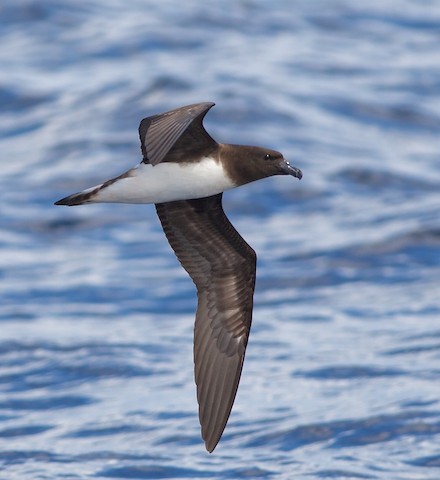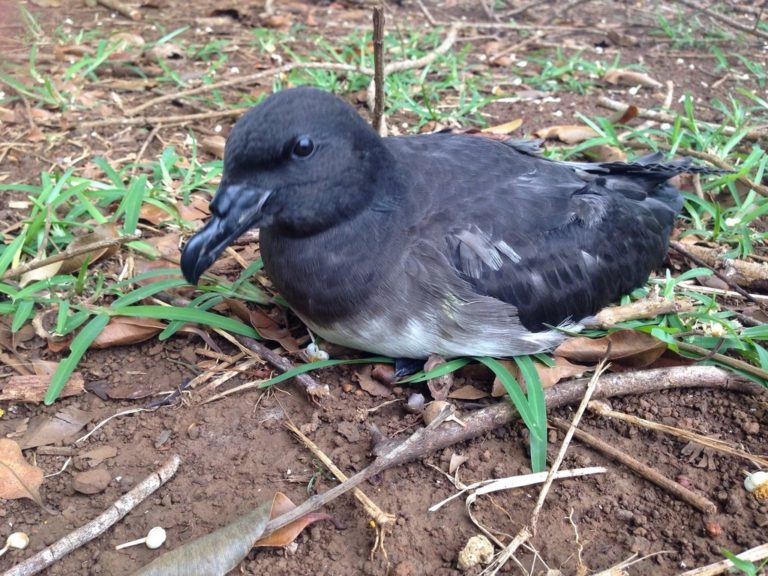Birdfinding.info ⇒ Widespread and locally common across the South Pacific, but mostly in the immediate vicinity of the islands where it breeds, including Tahiti and Fiji. It is readily seen on pelagic trips from Queensland, Australia, such as the ones out of Southport. Uncommon but regular in Middle American offshore waters from Cabo San Lucas to the Gulf of Panama between March and November.
Tahiti Petrel
Pseudobulweria rostrata
Breeds on South Pacific islands and disperses widely across the tropical Pacific and Indian Oceans.
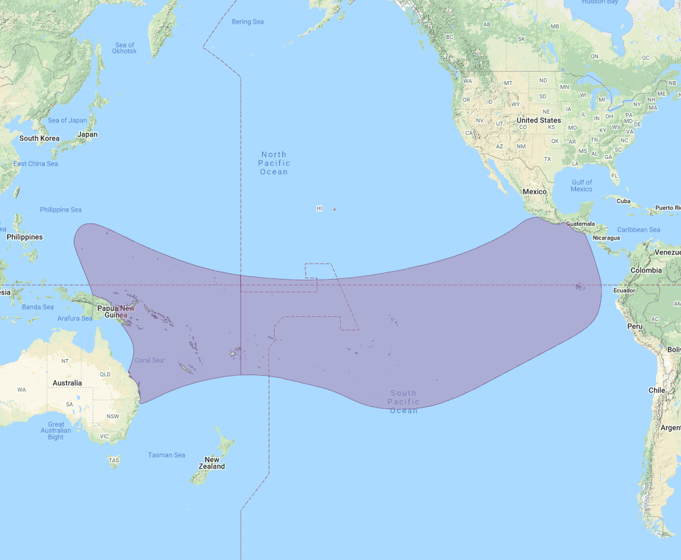
Approximate at-sea distribution of Tahiti Petrel. © Xeno-Canto 2021
Breeding. Breeds in New Caledonia, Fiji, Samoa, and French Polynesia, nesting mainly in burrows in small colonies in mountain forests. Formerly also bred in Vanuatu, and breeding has been suspected in the Cook Islands.
In New Caledonia, the breeding population has been estimated at around 250-500 pairs, and declining. About forty nesting areas, averaging about five to ten pairs each, have been detected in mountains of Grande Terre, and at least twelve on nearshore islets in the southern lagoon.
In Fiji, breeds on Gau and Taveuni—likely hundreds of pairs on the latter, based on the nature of the habitat and numbers seen in adjacent waters.
In American Samoa, breeds on Ta’u and Tutuila—possibly several hundred or a few thousand pairs on Ta’u, based on the extent of prime habitat and vocalizations.
In the Society Islands, a few thousand pairs breed on Moorea, several hundred on Tahiti, and breeding is also suspected on Bora Bora.
In the Marquesas, the population has been estimated at less than 500 pairs, breeding on Nuku Hiva, Hiva Oa, Tahuata, and possibly also on Ua Pou, Ua Huka, and Fatu Hiva.
In the Gambiers, a few pairs each breed on Mangareva, Akamaru and Manui.
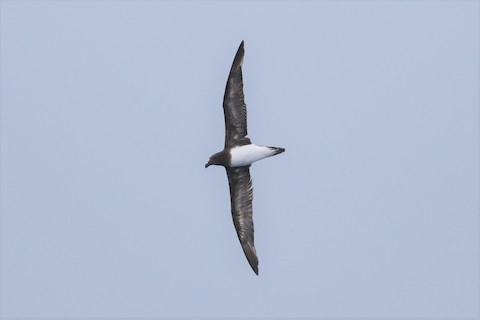
Tahiti Petrel in the wrong ocean. (Offshore from Hatteras, North Carolina; May 29, 2018.) © Peter Flood
Nonbreeding. Disperses widely across the tropical Pacific and Indian Oceans: regular east to offshore waters of Middle America from Mexico to Panama (mainly March to November)
Small numbers move west through the Arafura, Banda, and Timor Seas into the eastern Indian Ocean—at least occasionally wandering west to the Mozambique Channel.
Apparently regular in small numbers across the Philippine Sea (west to Taiwan), Micronesia and Hawaiian waters.
An extraordinary vagrant was photographed off of Hatteras, North Carolina, May 29, 2018.
Identification
A medium-large gadfly petrel with dark-brown upperparts, a dark-brown hood, mostly white underparts, and a disproportionately thick bill and unusually long wingsl—giving the impression of a Razorbill (i.e., the North Atlantic alcid) with albatross wings.
The nasal tubes are notably thick and often stand out in profile like a shelf between the forehead and the mandible.
The upperparts are mostly blackish-brown, but often paler brown or whitish on the uppertail coverts—or sometimes more extensively on the rump and tail.
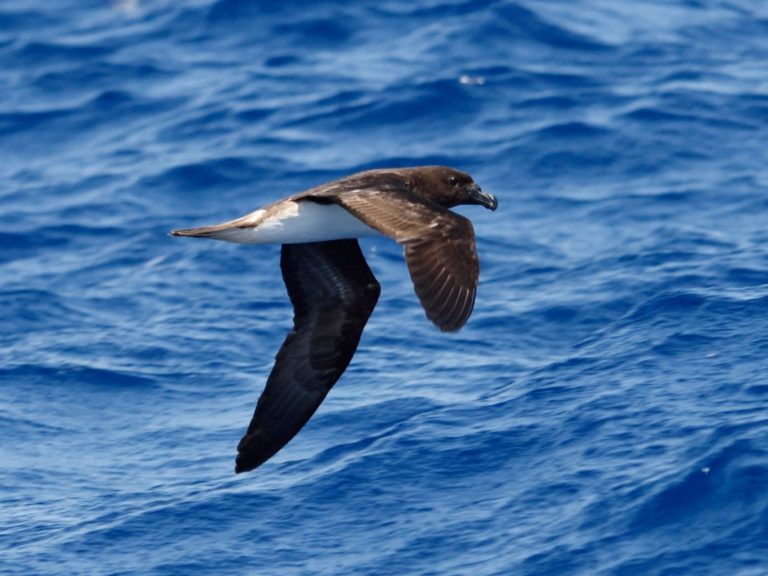
Tahiti Petrel. (Offshore from Southport, Queensland, Australia; November 21, 2015.) © Hiroyuki & Shoko Tanoi
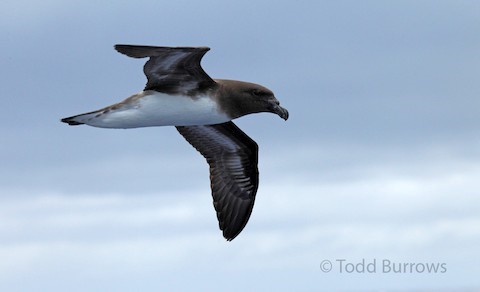
Tahiti Petrel. (Offshore from Southport, Queensland, Australia; November 16, 2013.) © Todd Burrows
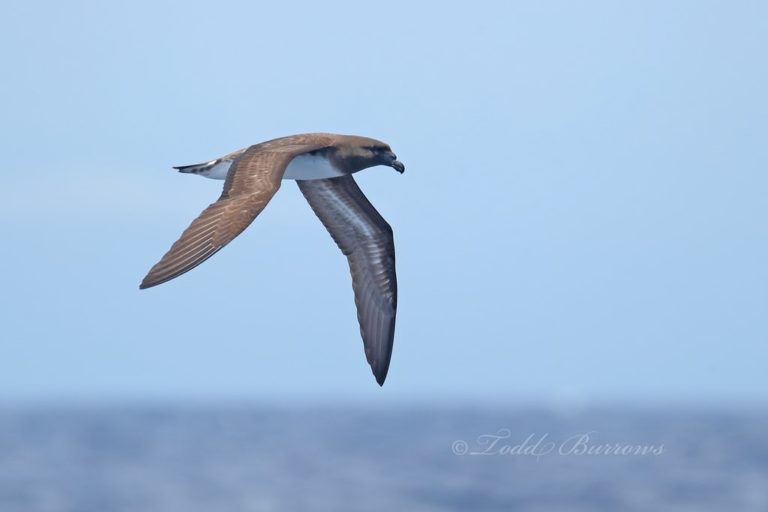
Tahiti Petrel. (Offshore from Southport, Queensland, Australia; January 16, 2021.) © Todd Burrows

Tahiti Petrel, showing uncanny resemblance to unrelated Razorbill of the North Atlantic. (Offshore from Southport, Queensland, Australia; April 28, 2019.) © Deborah Metters
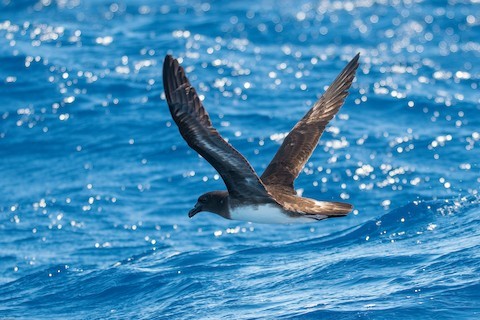
Tahiti Petrel, showing whitish uppertail coverts. (Offshore from Sydney, Australia; April 10, 2021.) © Cary Lewis

Tahiti Petrel, showing whitish uppertail coverts. (Offshore from Sydney, Australia; April 10, 2021.) © David Sinnott
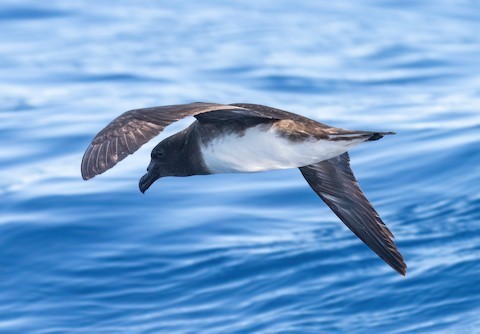
Tahiti Petrel. (Offshore from Sydney, Australia; April 10, 2021.) © David Sinnott
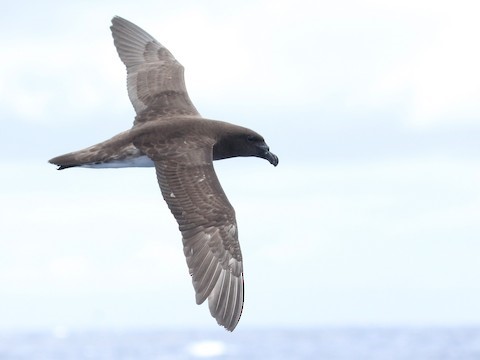
Tahiti Petrel, dorsal view. (Offshore from Southport, Queensland, Australia; November 16, 2013.) © Deborah Metters

Tahiti Petrel, dorsal view—note the prominence of the nasal tubes. (Offshore from Southport, Queensland, Australia; January 16, 2021.) © Todd Burrows
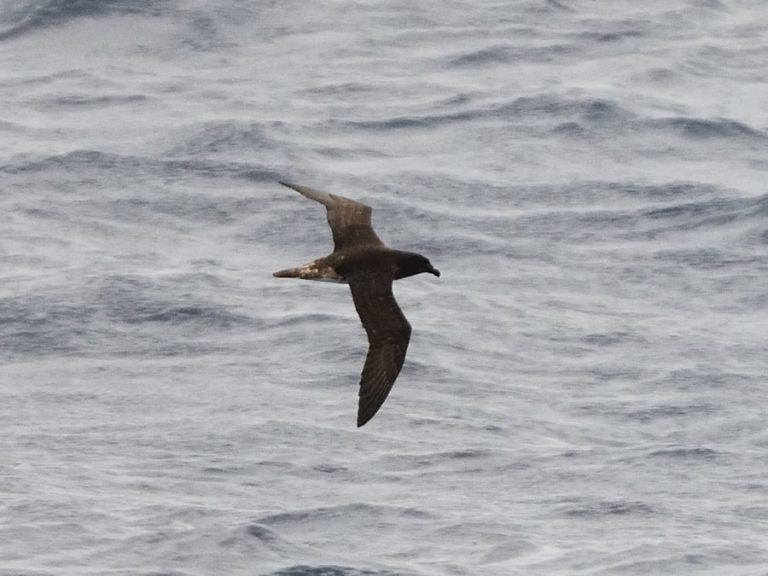
Tahiti Petrel, dorsal view showing narrowly pale-brown uppertail coverts. (Offshore from New Caledonia; March 22, 2019.) © Hiroyuki & Shoko Tanoi

Tahiti Petrel. (Offshore from Mooloolaba, Queensland, Australia; February 2, 2020.) © Richard Fuller
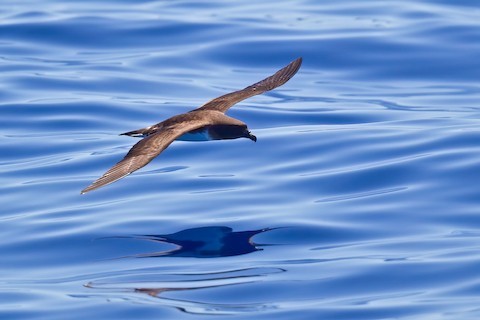
Tahiti Petrel. (Offshore from Mooloolaba, Queensland, Australia; February 2, 2020.) © Mat Gilfedder
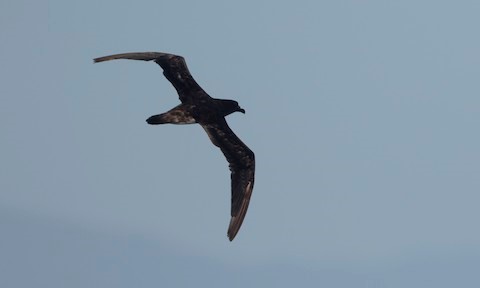
Tahiti Petrel, dorsal view showing patchy pale-brown on rump. (Offshore from Punta Colorada, Baja California Sur, Mexico; October 22, 2019.) © Zak Pohlen
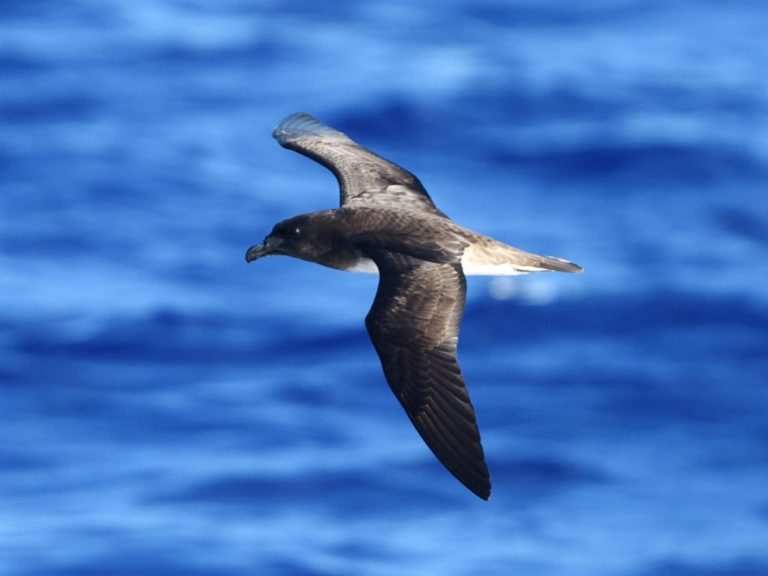
Tahiti Petrel, dorsal view showing pale-brown rump. (Offshore from the Gambier Islands, French Polynesia; November 17, 2018.) © Hiroyuki & Shoko Tanoi
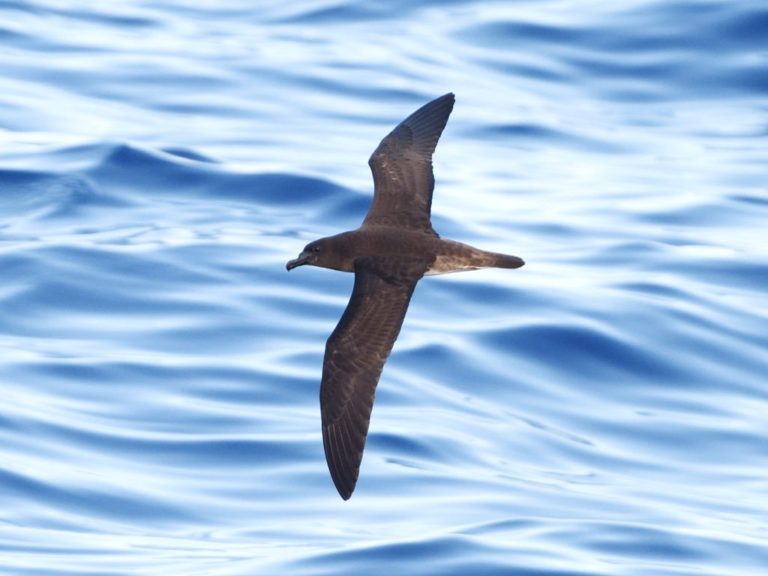
Tahiti Petrel, dorsal view showing pale-brown rump. (Offshore from the Gambier Islands, French Polynesia; November 17, 2018.) © Hiroyuki & Shoko Tanoi
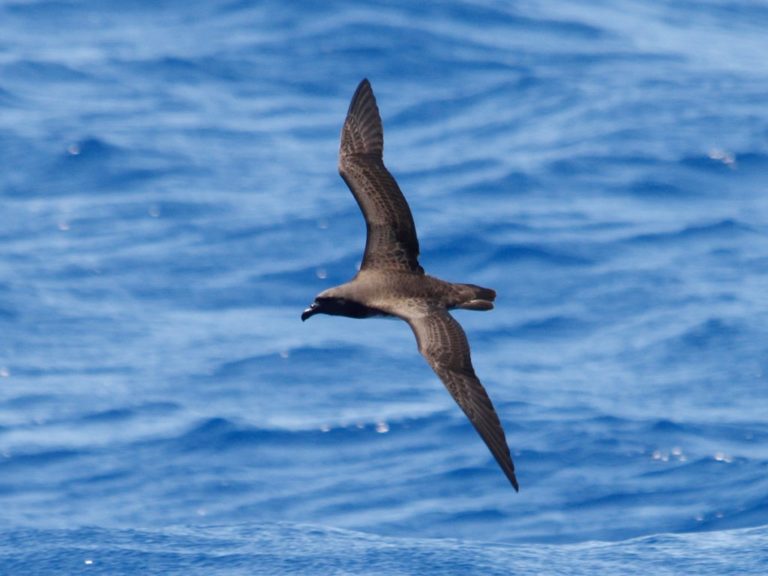
Tahiti Petrel, dorsal view showing mostly uniform upperparts. (Offshore from Southport, Queensland, Australia; November 21, 2015.) © Hiroyuki & Shoko Tanoi

Tahiti Petrel, dorsal view showing mostly uniform upperparts. (Offshore from South West Rocks, New South Wales, Australia; March 22, 2019.) © Liam Murphy
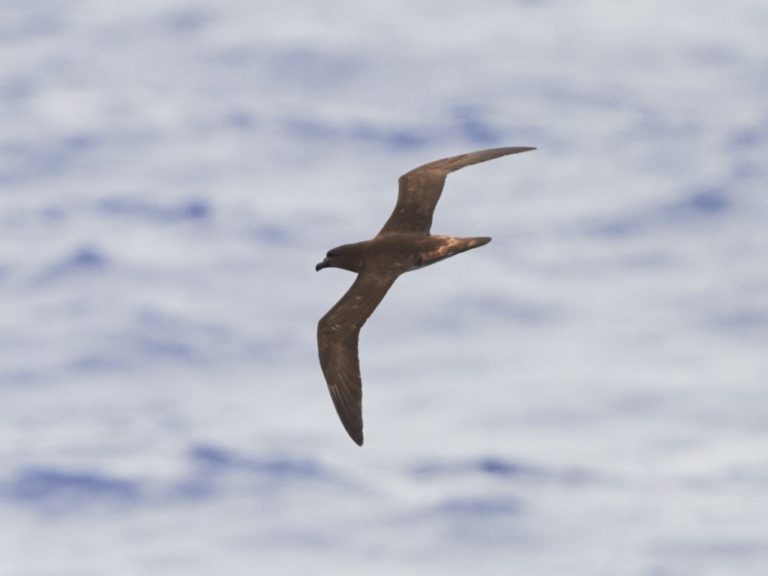
Tahiti Petrel, dorsal view showing narrowly pale-brown uppertail coverts. (Offshore in French Polynesia; November 16, 2018.) © Hiroyuki & Shoko Tanoi
The undersides of the wings are usually either uniformly dark throughout or dark with a contrasting white central stripe through the edge of the wing-lining.
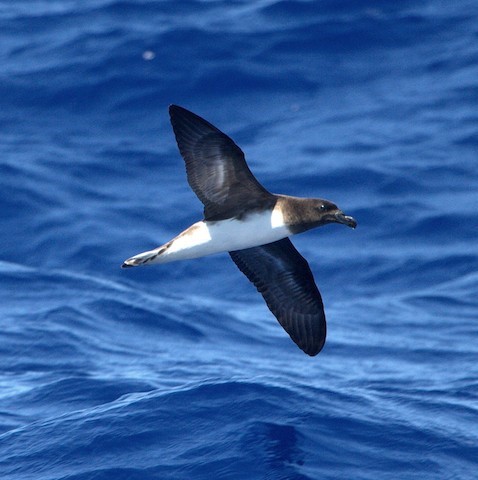
Tahiti Petrel, ventral view showing a narrow whitish stripe on the wing linings. (Offshore from Southport, Queensland, Australia; February 23, 2008.) © Mat Gilfedder

Tahiti Petrel, ventral view showing dark underwings. (Offshore from the Gambier Islands, French Polynesia; November 17, 2018.) © Hiroyuki & Shoko Tanoi

Tahiti Petrel, ventral view showing dark underwings. (Offshore from Southport, Queensland, Australia; August 21, 2010.) © Chris Wiley
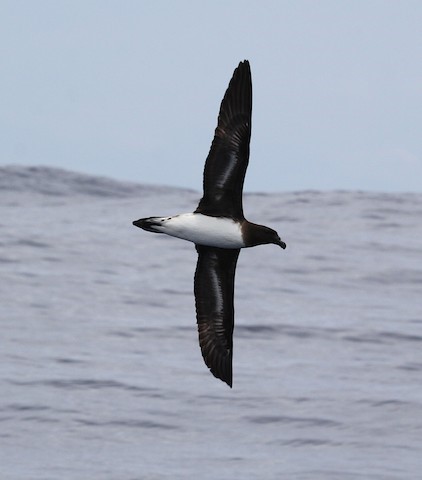
Tahiti Petrel, ventral view showing a narrow whitish stripe on the wing linings. (Offshore from Southport, Queensland, Australia; November 17, 2018.) © Niel Bruce
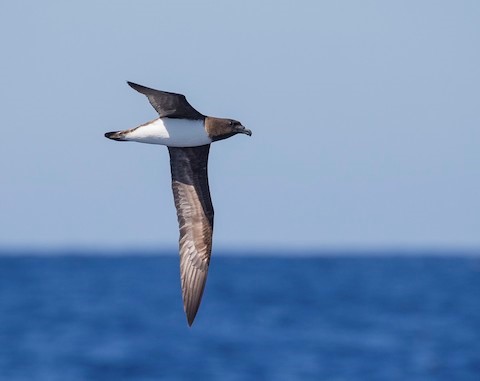
Tahiti Petrel, ventral view showing mostly dark underwings with glare causing reflective pallor. (Offshore from Southport, Queensland, Australia; March 21, 2020.) © Gus Daly
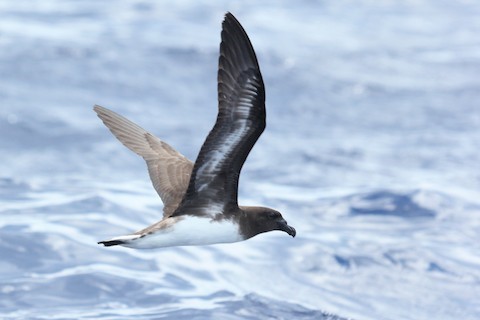
Tahiti Petrel, ventral view showing a broad whitish stripe on the wing linings. (Offshore from Southport, Queensland, Australia; November 16, 2013.) © Deborah Metters

Tahiti Petrel. (Offshore from South West Rocks, New South Wales, Australia; March 22, 2019.) © Liam Murphy
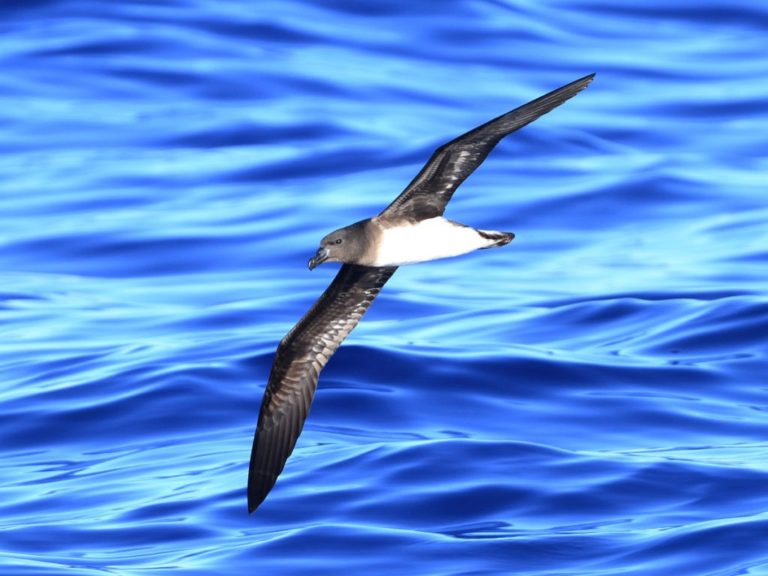
Tahiti Petrel. (Offshore from the Gambier Islands, French Polynesia; November 17, 2018.) © Hiroyuki & Shoko Tanoi

Tahiti Petrel. (Offshore from South West Rocks, New South Wales, Australia; March 22, 2019.) © Liam Murphy

Tahiti Petrel, ventral view showing dark underwings with glare causing reflective pallor. (Offshore from the Gambier Islands, French Polynesia; November 17, 2018.) © Hiroyuki & Shoko Tanoi

Tahiti Petrel, ventral view showing a whitish stripe on the wing linings. (Offshore from Southport, Queensland, Australia; April 28, 2019.) © Andrew Rock
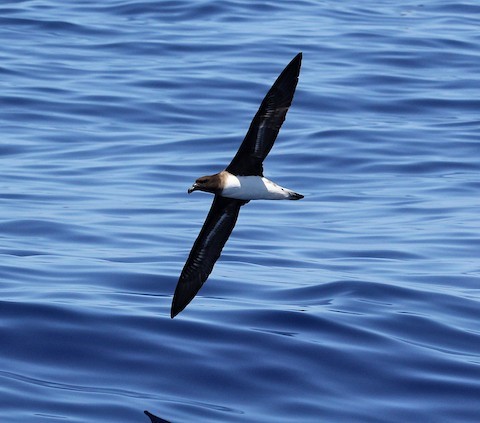
Tahiti Petrel, ventral view showing a whitish stripe on the wing linings. (Offshore from Southport, Queensland, Australia; October 20, 2018.) © Niel Bruce
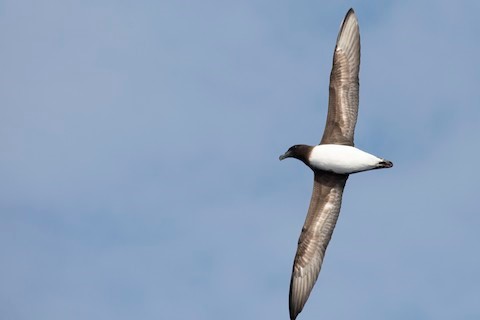
Tahiti Petrel, ventral view showing a whitish stripe on the wing linings and a shiny reflective pallor on the flight feathers. (Offshore from Southport, Queensland, Australia; February 13, 2021.) © Isaac Clarey

Tahiti Petrel, ventral view showing a whitish stripe on the wing linings—note full extension of long wings, giving it an albatross-like appearance. (Offshore from Southport, Queensland, Australia; August 15, 2020.) © Kye Turnbull

Tahiti Petrel, ventral view showing a whitish stripe on the wing linings—note full extension of long wings, giving it an albatross-like appearance. (Offshore from New Caledonia; March 22, 2019.) © Hiroyuki & Shoko Tanoi
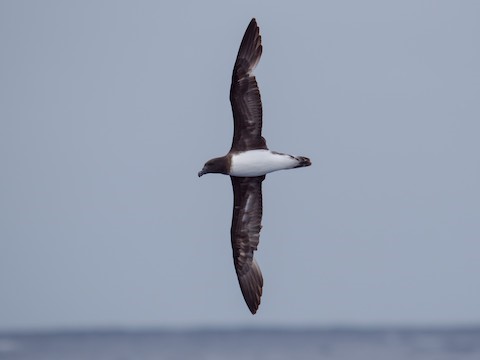
Tahiti Petrel, molting its inner primaries. (Offshore from Southport, Queensland, Australia; January 25, 2020.) © Gus Daly
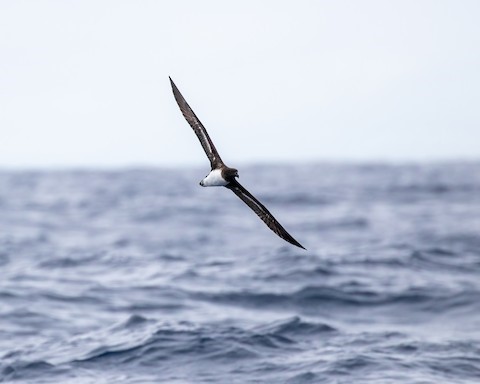
Tahiti Petrel showing full extension of long wings, giving it an albatross-like appearance. (Offshore from Mooloolaba, Queensland, Australia; February 14, 2021.) © Cheryl Ponter
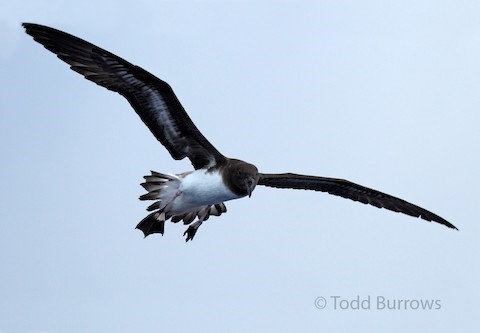
Tahiti Petrel. (Offshore from Southport, Queensland, Australia; November 16, 2013.) © Todd Burrows
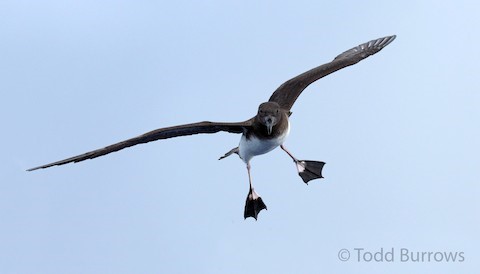
Tahiti Petrel. (Offshore from Southport, Queensland, Australia; November 16, 2013.) © Todd Burrows
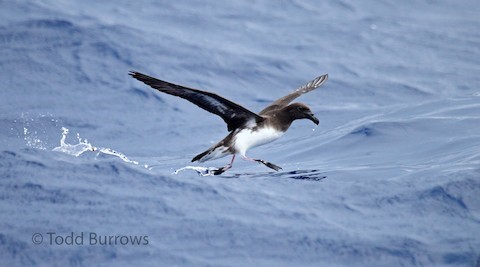
Tahiti Petrel. (Offshore from Southport, Queensland, Australia; November 16, 2013.) © Todd Burrows
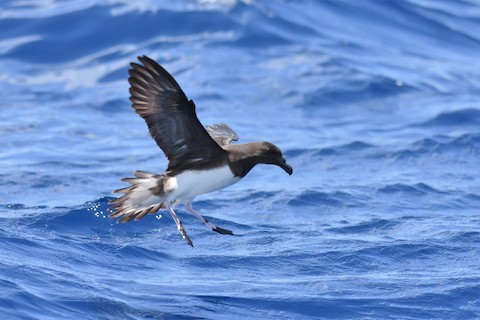
Tahiti Petrel. (Offshore from Southport, Queensland, Australia; February 29, 2020.) © Stephen Haase
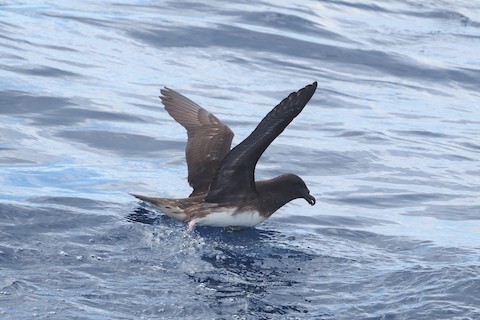
Tahiti Petrel. (Offshore from Southport, Queensland, Australia; February 29, 2020.) © Isaac Clarey
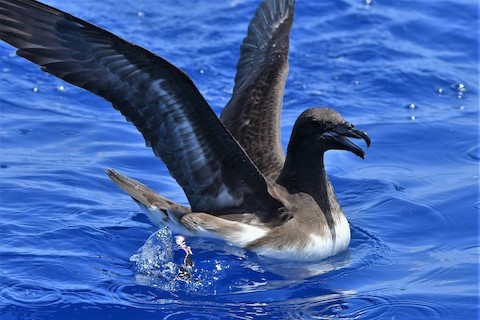
Tahiti Petrel. (Offshore from Southport, Queensland, Australia; November 21, 2020.) © Sam Adams
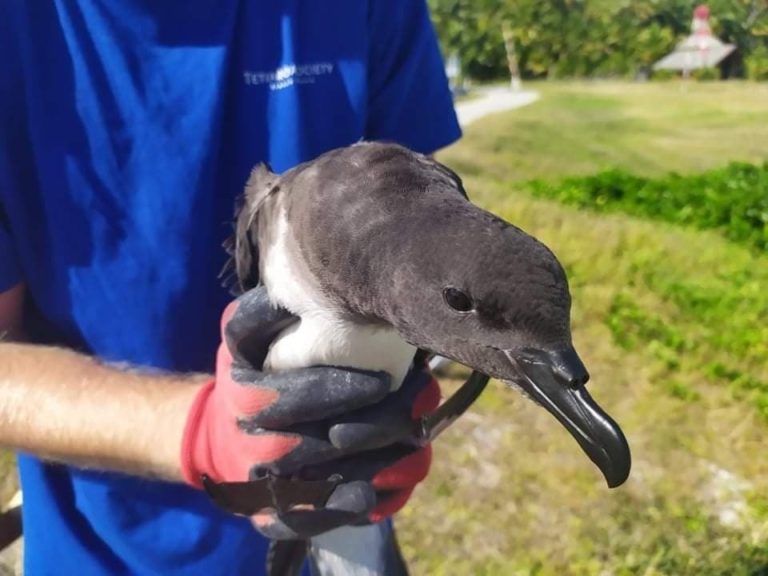
Tahiti Petrel. (Tetiaroa, French Polynesia; August 20, 2020.) © defillion
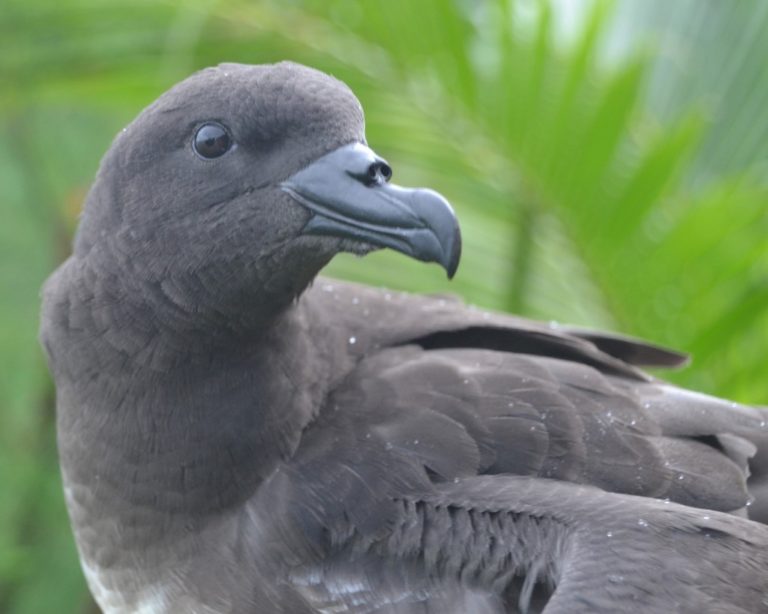
Tahiti Petrel. (Tahiti, French Polynesia; November 20, 2019.) © Pierre-Louis Stenger
Cf. Beck’s Petrel. Tahiti and Beck’s Petrels are essentially identical, and were initially considered conspecific. They differ mainly in size, as Beck’s’ length and wingspan are about 70-80% of Tahiti’s. Beck’s remains little-known: it is suspected to breed on New Ireland and can be found in the adjacent Solomon Sea. Any wider distribution of Beck’s remains unknown, in part because its range appears to fall entirely within the range of the effectively indistinguishable Tahiti Petrel.
The size difference is apparent when they are seen together—which sometimes happens in the Solomon Sea—but that difference is difficult to apply without a side-by-side comparison. Being somewhat smaller, Beck’s appears faster and more agile in flight, which may be noticeable to very experienced observers in the field.
Cf. Phoenix Petrel. Tahiti and Phoenix Petrels overlap widely across the tropical Pacific Ocean. They are very similar in plumage but differ significantly in structure and flight behavior. Phoenix is a typical mid-sized Pterodroma, with an active, bounding flight pattern, whereas Tahiti is proportionately long-winged, has a strikingly thick bill, and has a more languid flight pattern, gliding like an albatross.
Their underwing patterns also differ. Tahiti Petrel typically shows either all-dark underwings or a whitish central stripe, whereas Phoenix typically shows two-toned underwings with a consistent but subtle whitish patagial stripe.
Cf. Magenta Petrel. Tahiti and Magenta Petrels likely overlap to some extent in the South Pacific, but the critically endangered Magenta Petrel is so rare that it is nearly unknown away from its breeding grounds in the Chatham Islands. Although the two are nearly identical in both plumage and size, they differ in a few details.
Structurally, Tahiti Petrel is slimmer overall, but has a disproportionately thick bill, whereas Magenta is heavy-bodied and has a proportionately typical bill for a Pterodroma. The two appear to differ slightly in the extent of their dark hoods: Tahiti’s includes the head, neck, and part of the chest, whereas Magenta’s appears to be somewhat smaller, covering only the head and neck.
Notes
Polytypic species consisting of two recognized subspecies.
IUCN Red List Status: Near Threatened.
References
BirdLife International. 2018. Pseudobulweria rostrata. The IUCN Red List of Threatened Species 2018: e.T22697925A132612667. https://dx.doi.org/10.2305/IUCN.UK.2018-2.RLTS.T22697925A132612667.en. (Accessed May 30, 2021.)
Brazil, M. 2009. Birds of East Asia. Princeton University Press.
eBird. 2021. eBird: An online database of bird distribution and abundance. Cornell Lab of Ornithology, Ithaca, N.Y. http://www.ebird.org. (Accessed May 30, 2021.)
Harrison, P. 1983. Seabirds: An Identification Guide. Houghton Mifflin, Boston.
Howell, S.N.G. 2012. Petrels, Albatrosses & Storm-Petrels of North America. Princeton University Press.
Howell, S.N.G., and S. Webb. 1995. A Guide to the Birds of Mexico and Northern Central America. Oxford University Press.
Howell, S.N.G., and K. Zufelt. 2019. Oceanic Birds of the World. Princeton University Press.
Pratt, H.D., P.L. Bruner, and D.G. Berrett. 1987. A Field Guide to the Birds of Hawaii and the Tropical Pacific. Princeton University Press.
Pyle, R.L., and P. Pyle. 2017. The Birds of the Hawaiian Islands: Occurrence, History, Distribution, and Status. Version 2 (January 1, 2017). http://hbs.bishopmuseum.org/birds/rlp-monograph/. B.P. Bishop Museum, Honolulu, Hawaii.
Seabirding of Japan. 2021. Tahiti Petrel. http://seabirding-japan.com/tahiti-petrel/. (Accessed May 30, 2021.)
Xeno-Canto. 2021. Tahiti Petrel – Pseudobulweria rostrata. https://www.xeno-canto.org/species/Pseudobulweria-rostrata. (Accessed May 30, 2021.)
